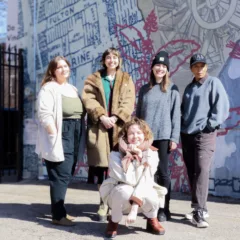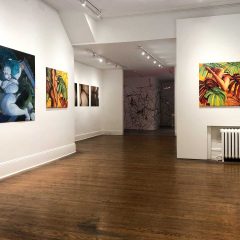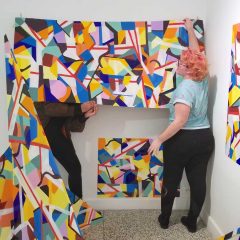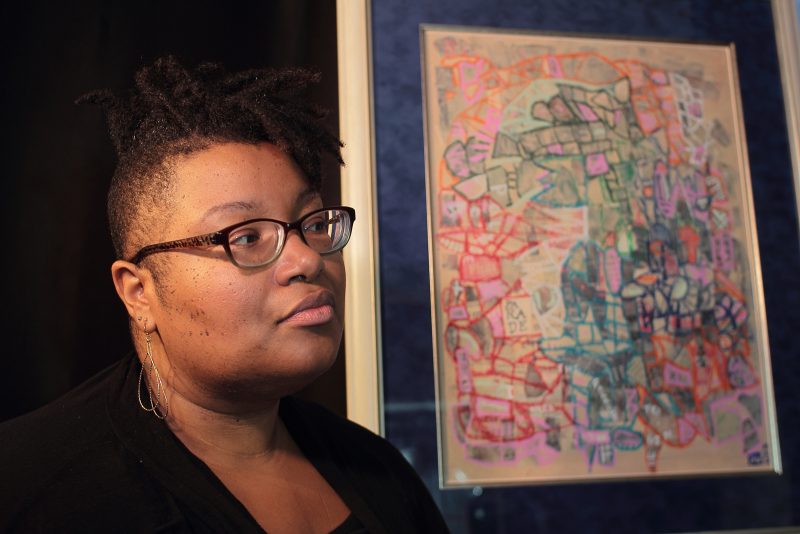
Alex Smith: The concept of “disposable ephemera” is wildly interesting; when I hear the term in a non-artistic context, I think of people of color, queer folks, and otherwise marginalized people who are often used as pawns, pieces, or in fact, ephemera. Is that something that sparks your interest in the concept? If so, how, and if not, why not?
Kara Mshinda: In an artistic context, I use the phrase “disposable ephemera” as a name for consumer-based print media and materials that are used once or have a temporary use. Weekly ad circulars, menus, “junk” mail, flower bouquets, plastic bags, receipts, food wrappers, and paper bags are examples.
I use these types of items in my artwork because they are the stuff of everyday life. We use, interact, or at least see these things and discard them, ignore them, or forget about them.
This kind of temporality in material culture sparks my interest. I previously worked in a history museum and I was surrounded by objects (muskets, helmet badges, correspondence, cannon shot) that were deemed “historical” and were hence “culturally valuable.” I learned that the worthiness of these objects was arbitrary. In and of themselves, these objects have no power. The power they possess is given by the people who believe in their importance and sanctify their value. Sometimes these objects are randomly found and other times they are handed down through families. Being around these objects led me to question “What about the stuff of everyday life? What value, if any, do we place upon things in which we dispose?”
In a non-artistic context, I suppose I am paying tribute to something larger–the reality of the dispossessed, the marginal, the Other, and people of color, queer folks, and otherwise marginalized people like you stated. Our lives are valued less. Our work is oftentimes overlooked or dismissed, yet we remain and we continue. I want my artwork to matter in this regard. I want to express the pangs of trauma as well as the strength that comes with surviving and living in a complex society like the United States. What I mean by “complex society” is a society historically rooted in violence, genocide, racism, class conflict, and xenophobia while also cultivating belief in the idea of “natural rights” and self-governance.
AS: There’s an element of entrapment or feeling closed off in your work. Is that by design? I feel like in your piece New Year VIII for instance, it looks like a tenement melting or a scrapbook exploding, the principle figure of a Black woman trapped behind the carnage. Are these ideas present in your work? How does something as explosive as New Year VIII relate to the weightiness and near claustrophobia of another of your pieces, A Lot on My Mind?
KM: Yes, others have used the term “compartmental” to describe my work. My work often has an anchor or site of explosion that generates outward. Loneliness, desire, anger, and confusion are ideas that shaped my artwork in the New Year series. The mass shooting in Orlando at Pulse occurred in 2016. Both of my parents were sick at the time. I was unemployed. And then there was the national crisis of the 45th presidential election. I wanted to express the layers of depression I experienced during this time. Painting and collage were methods that allowed me to resurface, escape, and re-center. The carnage that you read in New Year VIII and the heavy clutter in “A Lot on My Mind” expresses some that turmoil and anger I was feeling.
AS: How important is it for you to represent Black femmes in your work, as the subject and figures present, and also in the more abstract moments? How do you present these intersections via art if the work itself is non-linear or abstract?
KM: I was raised in a household with Black femmes and as such I am influenced by a feminine aesthetic. I also like to dispel ideas about what femmes look like or how they are supposed to behave. It’s been challenging to get this message across in my work because I am an abstract artist. I’ll use images or materials that are typically associated with the “feminine.” These include rose petals, perfume, nail enamel, lipstick or I’ll use colors, patterns, and letters from women’s fashion magazines.
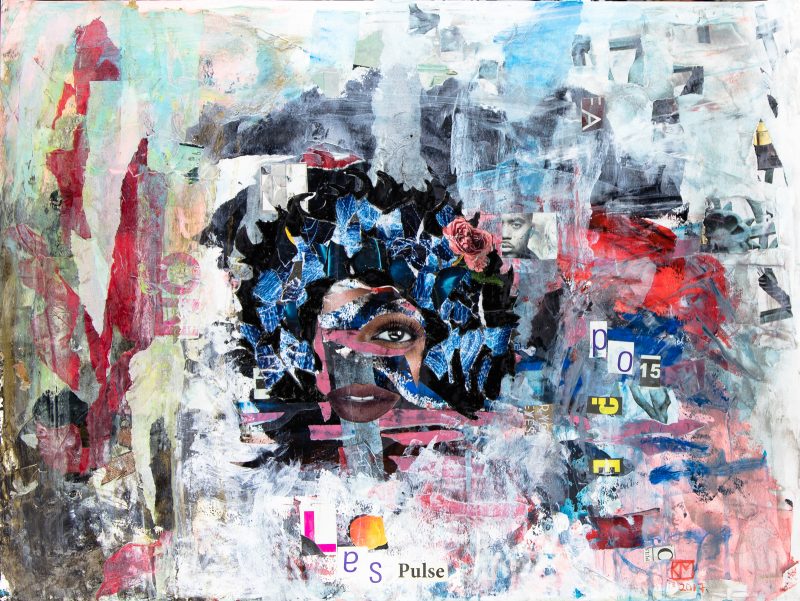
AS: Your work crosses mediums, oftentimes within the same piece, making it seem unique compared to other African American art typically supported by the fine arts industry. How necessary is it for Black and queer folks to cross mediums, ideas and influences? Has being an abstract painter left you on the outside of art circles?
KM: In my opinion, Black and queer artists have been crossing mediums, ideas, and influences for millenia. We offer different perspectives and challenge conventional ways of seeing and being in the world. Perhaps in the past, Black and queer artists have had to distill, neutralize, or hyperbolize their work to be accepted. On second thought, it still occurs. I think that gatekeeping in the art world is a factor. It’s challenging.
My artwork doesn’t quite fit into African American art, Queer art, or Women’s art that is typically supported by the fine arts industry. Based on my experiences over the last six years, I think there are a couple reasons behind this. First, I work outside the larger, conventional art industry. I did not have a typical art education or even go to art school. In contrast, I became an anthropologist. My art career started via networking with others and participating in community art projects.
Second, I am an abstract artist and let’s be real, abstract art doesn’t seem to have the same weight or value as illustrative, representational or concept based artwork. There are, however, exhibitions showcasing Black artists who are doing abstract artwork. For example, Rush Arts Philly had an exhibition of works this past spring called I KAN DO DAT and a majority of the artists were of color.
I don’t feel completely left out of art circles because I have worked with so many amazing QPOC and women artists who are creating their own circles and communities. This inspires me to continue.


